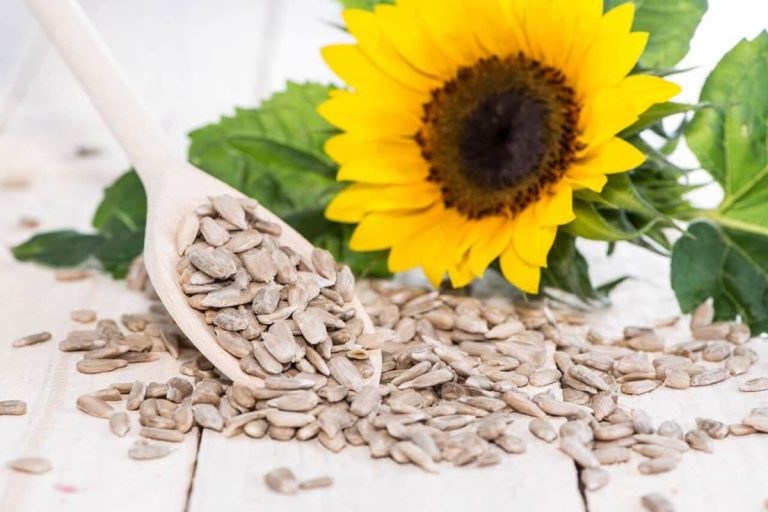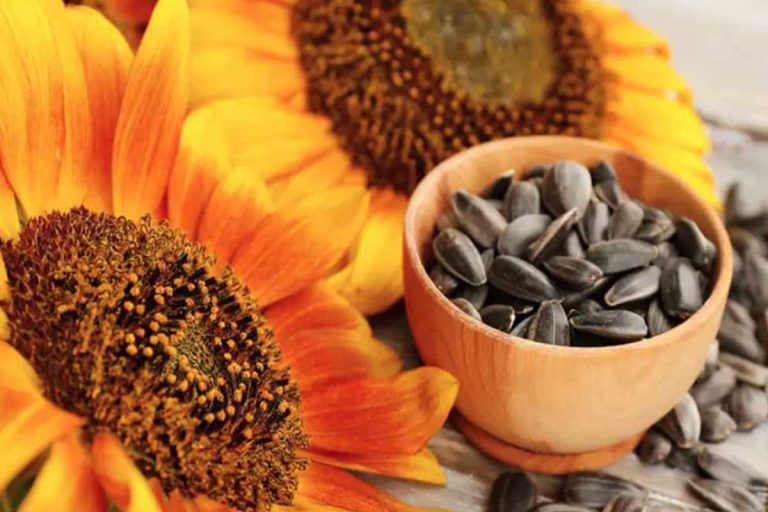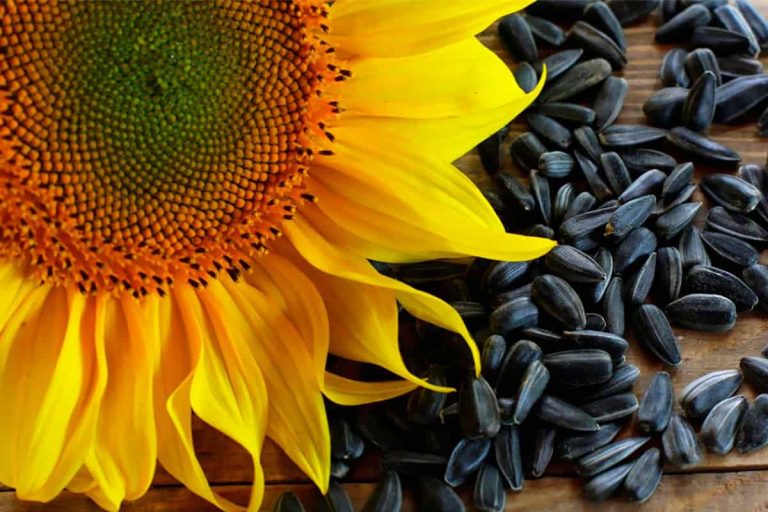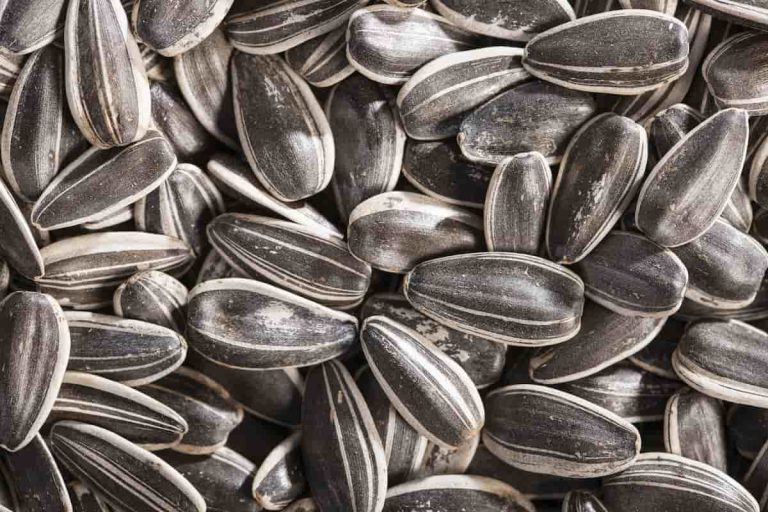Several small confectionery processing plants are involved in the production of fresh sunflower seeds for the wholesaler states to take advantage of local distribution.
Some seeds are roasted like peanuts, while others are shelled and pitted and sold as confectionary “nuts.” Food manufacturers buy sunflower seeds to sell directly to consumers as packaged food or as ingredients in other food products. Most shells are used as turkey bedding, although some are ground into pellets to provide fiber for livestock feed. (USDA, 2016)
As the export of unrefined sunflower oil has decreased, the export of refined oil has increased. By 2009/09, 81,000 tonnes of refined oil were exported, mainly to Canada. ([USDA, 2016)
Sunflower oil is cold pressed and requires minimal processing to produce a light, aromatic oil suitable for some culinary uses. Sunflower oil production includes seed cleaning, seed peeling, seed milling, pressing and crude oil extraction, crude oil refining.
Refinement: Prepared oil seeds are passed through a magnet to remove trace metals before being removed from the skin. and left a special cleaning device to remove other foreign materials.

Hulling: Oily sunflower seeds contain 20-30% of the husk, which is sometimes removed before oil extraction to ensure the quality of sunflower oil and meal. Peeling is done when the grain moisture after cleaning is 5%. The usual process involves cracking the grains by the mechanical action of a centrifugal or pneumatic shell, which can also be supplemented by abrasion.
Then we blow with the resulting mixture to separate the shells from the core. Some sunflower oilseeds have thin skins that are difficult to remove, so they can be removed to prevent oil spillage.
Grinding: The prepared sunflower seeds are passed through a magnet to remove metal debris before the shell is removed. For further surface pressing, using mechanized grooved rollers or a hammer mill, the dehulled seeds are crushed into a coarse powder of suitable consistency.
The food is then heated to facilitate oil extraction. When the oil is pressed, some impurities are released with the oil and must be removed before the oil is edible.
Pressing: The heated food is continuously fed into the screw press. The pressure typically increases from 68,950 to 206,850 kPa as the oil passes through the cracks in the barrel and is extracted.

Solvent extraction of excess oil: The cake left in the press can be processed by solvent extraction for maximum yield. A volatile hydrocarbon (usually hexane is used) dissolves the oil cake and then distills the solvent to extract the oil, which then passes through the material and collects at the bottom.
Trace Solvent Removal – 90% of the remaining solvent in the extracted oil is simply evaporated and collected for reuse. The remaining solvent is recovered using an extraction column. The oil evaporates and the lighter solvent floats to the top and condenses.
Oil refining: Oil refining involves removing color, smell and bitterness. Cleaning involves heating the oil to 40-85°C (107-188°F) and mixing an alkaline agent such as sodium hydroxide or sodium carbonate with the oil. The soap then forms unwanted fatty acids and alkaline additives and is usually removed by a centrifugal process. Most of the oil is separated from the soap residue and then dried.
The oil is also refined at this time with steam heated to 85-95 °C (188-206 °F) or water and acid. Most of the gum consists of phosphatide, which must be precipitated and the rest removed by a centrifugal process.
The oil used for cooking is then bleached by filtering it through fuller’s earth, activated charcoal, or activated clay, which can absorb some of the oil’s pigments. In contrast, refrigerator oil (for use in salads) is quickly cooled and filtered to remove the wax. This method lies in the fact that the oil does not solidify to a certain extent in the refrigerator.

The final process is oil deodorization, where steam is passed over hot oil under vacuum at temperatures of 225-250 °C (440-2485 °F) to remove volatiles and odors from the oil. Usually,
Cow consumption
After extracting oil from sunflower seeds (oil makes up about 40-45% of the weight of the seeds), the remaining seeds (meal) are taken. The nutritional value of sunflower meal depends primarily on the type of processing: (1) whether the seed oil is mechanically extracted (removed) or solvent extracted (more oil removed); and (2) degree of processing.
The husk is removed before the oil is processed. If some or all of the shell remains on the kernel before the oil is extracted, the diet will contain more fiber but less protein and fat. It is removed and if the skin remains on the seed, about 28%.
The fat content of flour extracted with solvent is about 1%. About 9% in mechanically pressed seed flour. Excellent source of information on different sunflower species diet and nutrition.
Of value to various animals is the publication “Using Sunflower Meal in Livestock Diets,” available from the National Sunflower Association (tel. 888-718-7033). Regardless of how sunflower meal is produced, it can be used as the sole source of additional protein in a dairy or beef diet.

Snack Use Whole or sweet sunflower seed use in the United States, although only about 10 to 20 percent of the annual crop, is a significant market.
The price of confectionery sunflower is much higher than oilseed sunflower. Most sunflower cookies are sold as snacks. In Russia, sunflower seeds are a very popular snack food, with people reportedly carrying bags in their pockets, and are more popular than peanuts in the United States for bread or other baked goods.
Confectionery sunflowers have larger seeds, smoother skins, less fat, and are usually striped or white (oilseeds are usually black, but may be white or striped).
Use of bird seed While there are no national statistics on the consumption of sunflower seeds, hundreds of thousands of hectares are used for this purpose. Sunflower is considered a premium ingredient in most bird mixes. Its price is higher than other common birdseed raw materials such as sorghum. ,
Crushed millet and corn. Confectionery sunflowers that do not meet food standards are usually sold in the poultry market, while oilseeds are mainly used for bird feed. In terms of packaging, butter is used because it is cheaper than feed and its small size makes it easy for small songbirds to eat.










